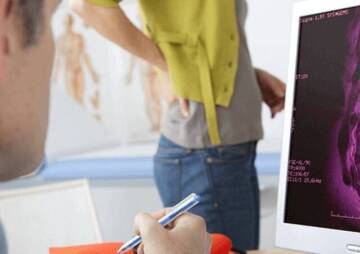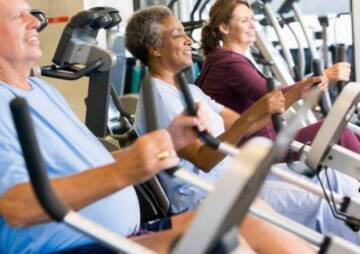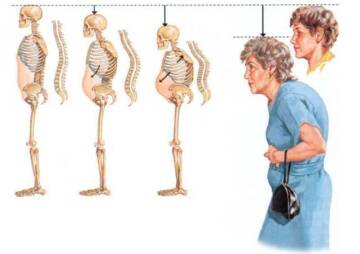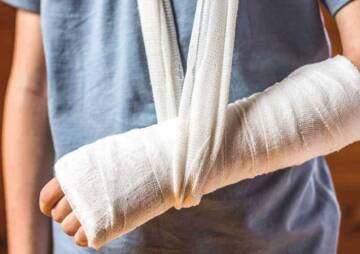-
فئة
Craniomaxillofacial Surgery
Orthopedic Surgery
Spine Surgery
Orthopedic Implants
Hip Surgery
Knee Surgery
Pectus Excavatum
Bone Graft
Disinfectants
Healthcare
Maintaining bone health is a vital step in the health of the whole body
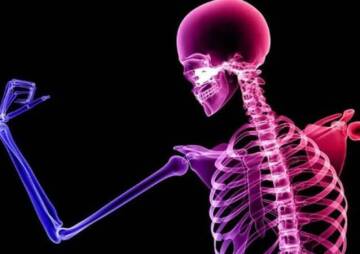
In addition to strength, bones allow us to move, so bone health is always important, especially in old age. Here's what you need to know about bone health.
Bones play many roles in the body, building the skeleton of the body, protecting internal organs, helping the muscles of the body and storing calcium. Building healthy and strong bones is very important in childhood and adolescence, but in adulthood, important steps can be taken for bone health.
Why is bone health important?
Bones are constantly changing Bone growth occurs in three general stages as we age: (1) growth, (2) modeling or stabilization, and (3) reconstruction. Stages one and two occur more rapidly in childhood and adolescence, and bone mass increases rapidly at this age. The regenerative phase is predominant in adulthood, which is accompanied by bone resorption, analysis, and replacement.
The amount of bone mass density also depends on various factors, including genetics and various environmental factors. The peak of bone mass formation is about 30 years old, after which only bone regeneration continues. But the amount of bone that is replaced is less than before, so the risk of osteoporosis is higher. For this reason, the greater the storage of bone mass at a young age, the lower the risk of osteoporosis. But it's better to look deeper into these issues.

Get to know the bone
Bone structure and physiology
At first glance, our skeleton may seem like a non-dynamic part, but the same structure is made up of tissues and cells that are constantly working. 65% of bone tissue is made of inorganic minerals that cause bone stiffness. The most important minerals in bone are calcium and phosphorus. In addition, magnesium, sodium, potassium and citrate ions are also present in bone structure.
The other 35% of bone tissue is an organic protein matrix, 90% of which is type I (one) collagen matrix. These collagen fibers wrap around each other to form the inner scaffold on which bone minerals are deposited. The other ten percent of this matrix contains various proteins that are non-collagen.

Types of bone tissue
Bone has two types of tissue. Cortical membrane and trabecular part (spongy).
Eighty percent of the cortical bone skeleton forms the outer surface of all bones. The cortical bone appears dense and solid, but actually has microscopic pores that allow arteries and nerves to pass through.
Another 20% of bone is trabecular tissue, which is found at the ends of the long bones and inside the smooth bones (skull, pelvis, sternum, ribs and scapula) and spinal vertebrae. These two types of tissues are different in terms of porosity and microstructures. For example, trabecular bones have a lower density and a higher surface area.

Stages of bone formation and reconstruction
Bone growth has three different stages. Growth, modeling (consolidation) and reconstruction
During the growth phase, the size of the bones increases. This growth is very fast, especially from birth to two years old. It continues at a slower rate during childhood and adolescence and usually stops in the early twenties. Of course, this cessation only involves longitudinal growth, but it will continue to change shape and thickness at older ages. Modeling in this time period occurs simultaneously with growth. In fact, this is the age when bone mass is formed and completed.

The regenerative stage involves a steady process of bone resorption that forms in adulthood and continues throughout life. It usually starts around the age of 34. At this stage, the rate of bone resorption is higher than bone formation, which leads to the loss of bone mass with age.

Minerals needed for bone
Several minerals have a direct role in the formation and structure of hydroxyapatite crystals. Other nutrients play an indirect role as cofactors or regulators of bone cell activity.
Calcium
About 99 percent of the body's calcium is found in bones and teeth, and another 1 percent is found in blood and soft tissues. The concentration of calcium in the blood must be maintained in a certain amount so that the physiological functions of the organs of the body are normal. For example, muscle contraction, contraction, and dilation of blood vessels are affected by the amount of calcium. If dietary calcium intake is insufficient, the blood uses the calcium in the bones to maintain its essential calcium levels.
The appropriate amount of calcium for men between the ages of 19 and 70 is 1000 mg per day and over 70 is 1200 mg per day and for women between the ages of 10 to 50 is 1000 mg per day and above 50 is 1200 mg per day. .

Phosphorus
More than half of the bone mineral mass is made up of phosphorus, which combines with calcium to form hydroxyapatite crystals. In addition, phosphorus plays an important role in bone matrix and bone stiffness. Due to its outstanding functions in bone, phosphorus deficiency can lead to bone tissue defects. However, in healthy people, phosphorus deficiency is uncommon, and there is little evidence that phosphorus deficiency affects the incidence of osteoporosis. The recommended amount of phosphorus in men and women over the age of 19 is 700 mg per day.

Other micronutrients
There are other micronutrients that are essential for bone health. Including fluoride, which requires four milligrams a day for men and three milligrams a day for women.
For bone health, the amount of magnesium required for men between 19 and 30 years is 400 mg per day and over 31 years is 420 mg per day, and for women between 19 and 30 years is 310 mg per day and over 31 years is 320 mg per day. It is the day.
The required sodium for women and men is 1500 mg per day and the amount of potassium for men is 3400 mg and for women is 2600 mg per day.
Vitamin D is 15 micrograms per day for those between the ages of 19 and 70, and 20 micrograms per day for those over 70. In addition, men need 120 micrograms a day and women need 90 micrograms of vitamin K for bone health. Vitamin A for men and 900 micrograms for women and 700 micrograms of vitamin C for men is 90 mg per day and for women is 70 mg per day.
Problems due to lack of minerals and micronutrients on the bones
Mineral deficiencies and the body's inability to absorb these nutrients cause bone tissue degeneration and certain bone diseases.
Osteomalacia
Osteomalacia, also called adult rickets; The body's inability to absorb minerals is due to cravings. Osteomalacia is caused by a lack of vitamin D and an inability to absorb calcium and phosphorus in the small intestine. This deficiency causes the bone matrix to be incompletely formed, causing the bones to become soft and unable to support the weight of the body. Under these conditions, the bones will deform due to the weight of the body.
Osteopenia
The tip of the osteoporosis but in the early stages. In fact, as defined by the World Health Organization (WHO), osteopenia is a pre-osteoporosis stage that occurs when a person's BMD is between minus 1 and minus 2.5.

Osteoporosis
Osteoporosis is a severe stage of bone resorption in which the bones are extremely fragile. Osteoporosis is diagnosed by BMD when the score is less than 2.5. The lower the number, the more osteoporosis and the double the risk of bone fractures.
What factors affect bone health?
60 to 80 percent of bone tissue density is determined by genetics, while 20 to 40 percent is influenced by lifestyle such as nutrition and physical activity. In short, the factors that affect bone health are:
Race and Family History: Whites and people of Asian descent are more prone to osteoporosis than other races. In addition, having family members with a history of osteoporosis increases the risk of developing osteoporosis in some family members.
Dietary calcium : Low calcium diet reduces bone density, premature bone loss and increases the risk of fractures.

Physical activity : People who are physically inactive are at higher risk for osteoporosis than those who are more active.
Smoking and alcohol : Research shows that tobacco and alcohol use weaken bones.
Gender : Women are more prone to osteoporosis than men because their bone tissue is less dense.
Body size : People who are very thin (with a body mass index of 19 or less) or people who have a small body frame are more at risk for osteoporosis because their bone mass decreases with age.
Age: Naturally, with age, bones become thinner and weaker.
Hormone levels: Excess thyroid hormone causes bone loss. In women, the rate of osteoporosis increases dramatically during menstruation due to decreased estrogen levels. Menstruation with long intervals before menopause has the same effect. In men, low testosterone levels can cause bone loss.
Medications: Corticosteroids such as prednisone, cortisone, prednisolone, and dexamethasone can damage bones if used for a long time. Other drugs that may increase the risk of osteoporosis include aromatase inhibitors for the treatment of breast cancer, selective serotonin reuptake inhibitors, methotrexate, some anticonvulsants such as phenytoin (dilantin), and phenobarbital.
Eating Disorders: People with anorexia or overeating are at risk for osteoporosis. In addition, gastrectomy, weight loss surgery, and conditions such as Crohn's disease, celiac disease, and Cushing's disease can affect the body's ability to absorb calcium.

What are some ways to protect your bones?
Bone protection can be done in very simple ways.
Inclusion of calcium in the diet
The recommended amount of calcium for people aged 19 to 50 years and men 51 to 70 years is 1000 mg per day. This amount is 1200 mg per day for women after the age of 50 and for men after the age of 70. This amount of calcium can be obtained from dairy products, almonds, broccoli, kale, canned salmon, sardines and soy products such as tofu. Otherwise, you can take calcium supplements as recommended by your doctor.
Do not forget vitamin D.
The body needs vitamin D to absorb calcium. For people aged 19 to 70, the daily intake of vitamin D is 600 units (IU) per day, and for the elderly over 71 years, it reaches 800 units per day.
Good sources of vitamin D include oily fish, such as salmon, salmon, whitefish and tuna. In addition, mushrooms, eggs and fortified foods, such as milk and cereals, are good sources of vitamin D. Sunlight also helps the body produce vitamin D. If you are worried about getting enough vitamin D, you can take supplements.

Exercise to the daily schedule include
Exercise that keeps the weight of the body on the bones helps to strengthen the bones. Walking, jogging, climbing stairs, strength training with weights, balance exercises and tai chi make the bones stronger and slower in their analysis and emptiness.

Live healthy
Substance use, smoking and alcohol consumption have a detrimental effect on bones. Eliminate them or minimize their consumption.
Bone health improves quality of life
The bones of the body, in addition to strengthening the body, allow us to move. They protect the internal organs of the body such as the brain, heart and other organs of the body. They are storage centers for minerals such as calcium and phosphorus, which in addition to strengthening bones, are released into the bloodstream when needed and used by other parts of the body.
There is a lot that can be done to keep your bones healthy and strong. Eating foods rich in calcium and vitamin D, exercising a lot and having good health habits help keep bones healthy.
Without proper diet, poor exercise weakens the bones and leads to osteoporosis, which in severe stages causes bone fractures , sometimes to improve the need for surgery and the use of appropriate bone protection equipment. For this reason, bone health should be a priority.
What do you do for your bone health? Comment for us.
- اشارة osteoporosis

